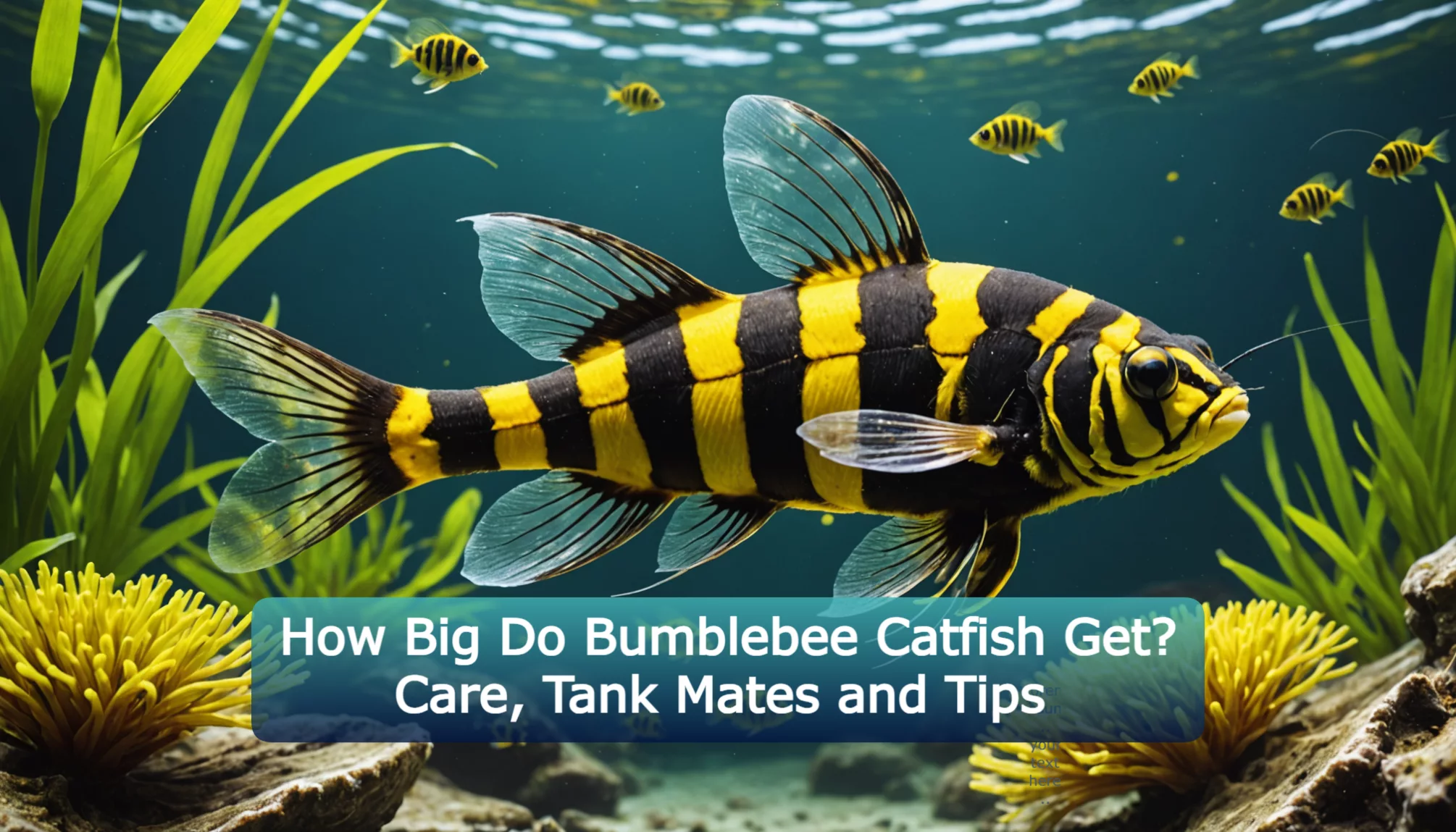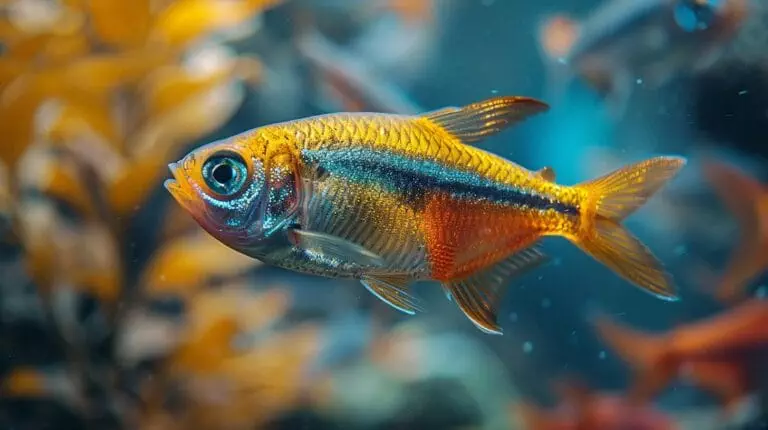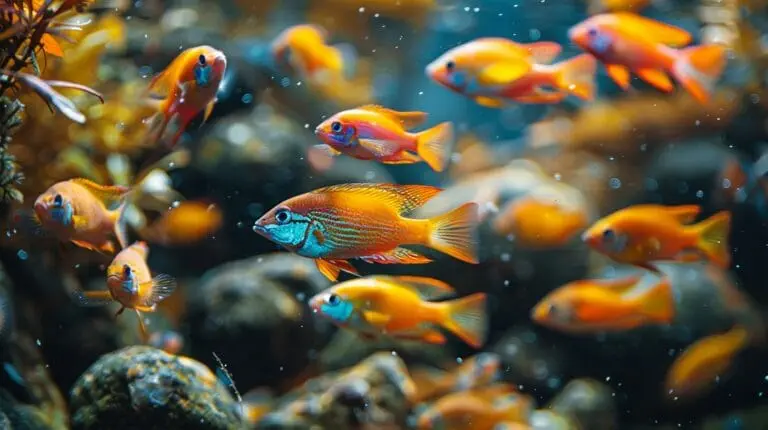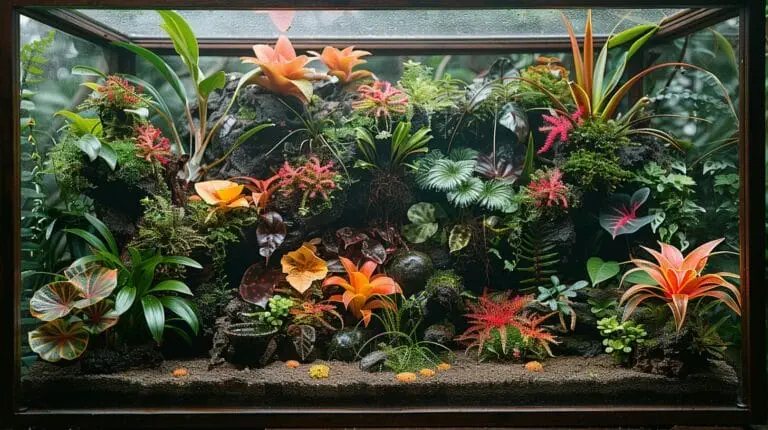Bumblebee catfish are not just striking with their unique yellow and black striped patterns; they also have a fascinating secret: how big do bumblebee catfish get? These captivating freshwater fish can reach impressive sizes, making them a popular choice for aquarium enthusiasts.
This guide will explore the factors affecting their growth, the best tank mates, and essential care tips to ensure your aquarium thrives. As you dive deeper into the world of these charming catfish, you’ll discover everything you need to know to provide them with the perfect home. Let’s swim into the details!
Overview of Bumblebee Catfish

Bumblebee catfish, known scientifically as Microglanis iheringi, are small, freshwater fish favored by aquarium enthusiasts. They feature distinct black and yellow bands that resemble a bumblebee’s pattern. This striking appearance makes them attractive additions to home aquariums. Understanding their characteristics, habits, and growth potential is essential for anyone interested in keeping these fish.
What Are Bumblebee Catfish?
Bumblebee catfish are native to South America, specifically found in rivers in Venezuela and Colombia. They belong to a family of catfish known for their bottom-dwelling behavior. These fish thrive in freshwater and are often kept in community tanks due to their peaceful nature. They prefer habitats with ample hiding spots, such as caves and dense vegetation, to feel secure.
Characteristics and Habits of Bumblebee Catfish
Bumblebee catfish are generally peaceful and sociable. They thrive in groups, making them suitable for community aquariums. Being nocturnal, they are most active at night and tend to hide during the day, often under rocks or in plants.
Bumblebee catfish are quite curious and love to explore their tank in search of tasty treats. They’re not picky eaters! They enjoy a balanced diet of sinking pellets, algae wafers, and the occasional special treat like bloodworms or brine shrimp
How Big Do Bumblebee Catfish Get?
Bumblebee catfish typically reach a size of 3 to 4 inches (approximately 7.5 to 10 cm) when fully grown. Under optimal care conditions, they can live for about 5 years. Some reports indicate that in standard aquarium settings, their maximum size may be around 3.5 inches (approximately 9 cm).
Their manageable size makes them ideal for home aquariums, as they do not require excessively large tanks. However, it is crucial to provide a suitable environment with enough space and hiding spots for their well-being.
Factors Affecting Bumblebee Catfish Growth
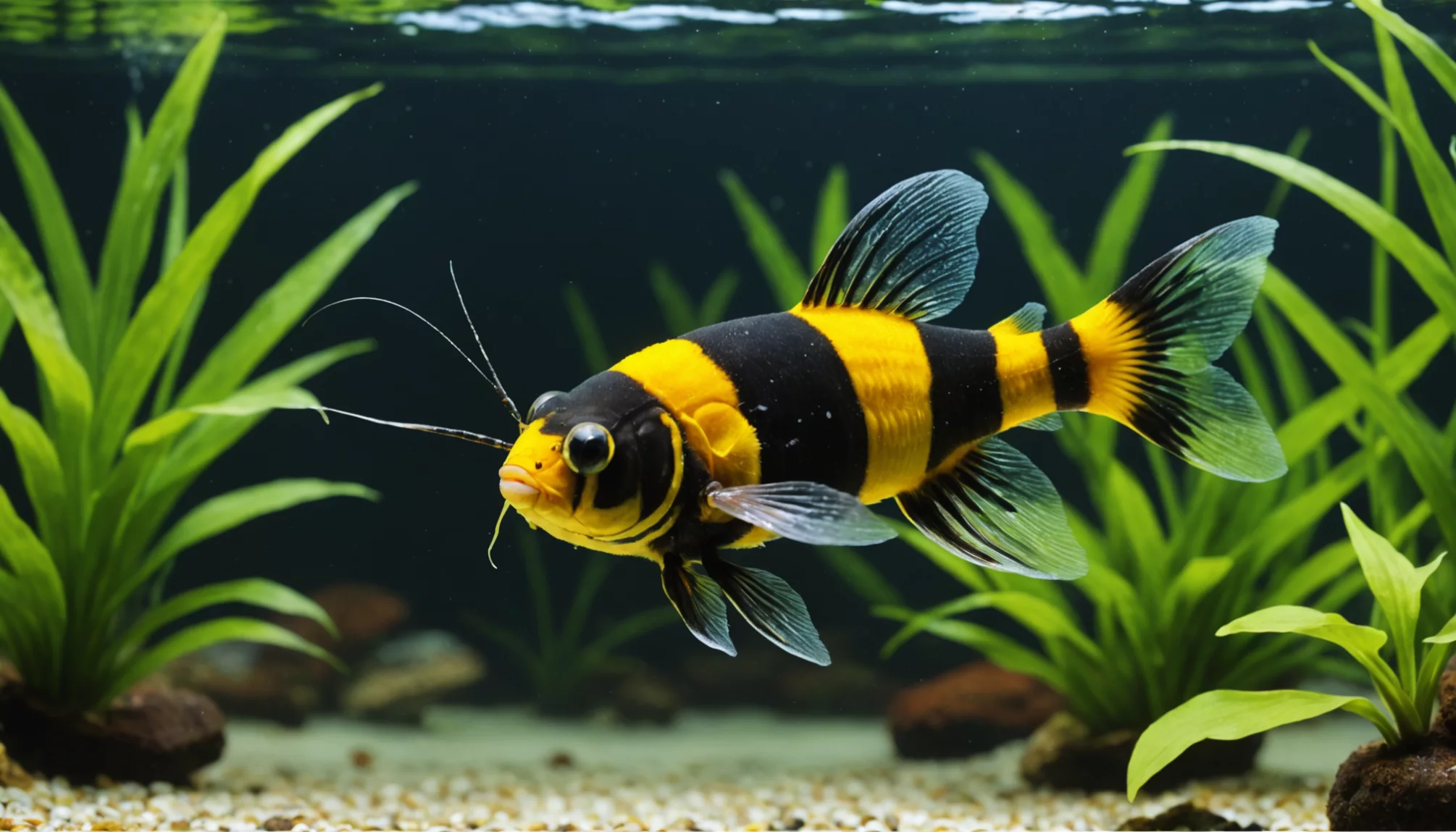
Environmental Conditions in the Fish Tank
The environment for bumblebee catfish is crucial for their growth and health. These fish do best in specific water conditions, which include:
- Water Temperature: The ideal range is 23 to 27°C (73 to 81°F). Keeping water in this range helps reduce stress and supports healthy growth.
- pH Levels: Bumblebee catfish prefer a pH of 6.0 to 7.5. Maintaining this balance is important, as acidic conditions can lead to abnormal behavior and health problems.
- Tank Size: A larger tank, ideally 20 to 25 gallons, provides ample swimming space. This allows the fish to exercise and grow comfortably.
Diet and Nutrition Requirements for Healthy Growth
The diet of bumblebee catfish greatly influences their growth. As carnivores, they need a protein-rich diet. Recommended food options include:
- High-Quality Sinking Pellets: These pellets provide a balanced diet and are designed to sink, making them accessible for bottom-dwelling fish like bumblebee catfish.
- Live and Frozen Foods: Bloodworms, brine shrimp, and insect larvae are excellent protein sources that encourage healthy growth.
- Algae Wafers: These can supplement their diet, adding extra nutrients.
Feeding bumblebee catfish a varied diet ensures they receive the nutrition needed for faster growth and to prevent health issues.
The Role of Tank Mates in Growth and Behavior
Choosing suitable tank mates is essential for bumblebee catfish. Stress can hinder their growth, so it’s vital to select compatible companions. Important considerations include:
- Peaceful Species: Tank mates should be calm and non-aggressive. Good companions include other small, peaceful fish like tetras and other gentle catfish.
- Similar Size: Ensuring that tank mates are of a similar size helps prevent aggression over food and territory.
- Adequate Hiding Spots: Providing plenty of hiding spots, like caves and plants, reduces stress, allowing bumblebee catfish to feel secure in their environment.
Careful selection and introduction of tank mates create a harmonious community, which is vital for the growth and well-being of bumblebee catfish. (Fishkeeping World)
Bumblebee Catfish Care and Maintenance

Bumblebee catfish, known for their striking appearance and manageable size, require specific care and maintenance to thrive in a home aquarium. Understanding their essential tank requirements, regular care routines, common health issues, and expert tips can help ensure these fascinating fish live happy and healthy lives.
Essential Tank Requirements for Bumblebee Catfish
Bumblebee catfish thrive in a well-maintained environment that mimics their natural habitat. Here are the essential tank requirements for these fish:
- Tank Size: A minimum tank size of 20 gallons is necessary to provide adequate space for swimming and hiding (Pet Me Daily). Keeping them in larger tanks allows for additional fish and features.
- Water Conditions: Bumblebee catfish prefer soft to moderately hard water with a hardness range of 8 to 12 dgh. The pH should be maintained between 6.0 to 7.5 for optimal health (FishKeeper).
- Temperature: Keep the water temperature between 23 to 27°C (73 to 81°F). A reliable heater and thermometer are essential for maintaining these conditions.
- Filtration: Adequate filtration is crucial for keeping the water clean and oxygenated. Use a filter that can efficiently process the tank’s water volume to reduce harmful waste and toxins.
- Hiding Spots: As bottom-dwellers, bumblebee catfish appreciate plenty of hiding spots. Incorporate caves, driftwood, and plants to create a safe and secure environment.
Regular Care Routines for Optimal Health
To keep bumblebee catfish healthy, regular care routines are necessary. Here are the key practices to follow:
- Water Changes: Perform 20-25% water changes weekly to maintain water quality. Regular changes help remove waste and replenish essential minerals (Pet Me Daily).
- Feeding: Bumblebee catfish are omnivores and require a varied diet. Include sinking pellets, algae wafers, and occasional treats like bloodworms or chopped vegetables. Feed them small amounts 1 to 2 times a day to prevent overfeeding.
- Monitoring Water Parameters: Regularly test the water for pH, hardness, ammonia, nitrite, and nitrate levels. A water testing kit ensures that tank conditions remain stable and healthy (Aquarium Source).
- Observation: Keep an eye on the fish’s behavior. Any signs of distress, such as abnormal swimming patterns or lack of appetite, may indicate underlying issues that need to be addressed.
Common Health Issues and How to Prevent Them
Bumblebee catfish can experience various health issues if not properly cared for. Here are some common problems and prevention tips:
- Ich (White Spot Disease): This parasitic infection is common in freshwater fish and appears as white spots on the fish’s body. Maintaining good water quality and treating the tank with appropriate medications can help prevent outbreaks.
- Stress and Aggression: Incompatible tank mates can lead to stress and aggression. To prevent this, carefully select compatible fish and provide ample hiding spots to allow bumblebee catfish to retreat if necessary (Aquarium Source).
- Poor Water Quality: Regular maintenance is crucial to prevent diseases related to poor water quality. Frequent water changes and proper filtration help reduce harmful toxins and ensure a healthy environment.
Expert Tips for Long-Term Care
Here are expert tips to ensure the long-term health and happiness of bumblebee catfish:
- Group Setup: Keeping bumblebee catfish in groups can promote natural behavior and reduce stress. Ensure the tank is large enough to accommodate the entire group comfortably.
- Avoid Overcrowding: While bumblebee catfish are social, avoid overcrowding the tank. Too many fish can lead to increased waste, stress, and competition for food (Pet Me Daily).
- Adjust Lighting: Bumblebee catfish are nocturnal. Use aquarium lights that simulate natural day and night cycles. Reducing light during the day can help create a more comfortable environment for these fish.
- Research Compatible Species: When choosing tank mates, select peaceful species that won’t compete aggressively for food or territory. Suitable tank mates include tetras, barbs, and other non-aggressive bottom dwellers.
By following these guidelines, bumblebee catfish enthusiasts can create a thriving aquarium environment that supports the health and well-being of these unique fish. Regular maintenance and attention to their needs can lead to a rewarding fishkeeping experience.
Compatibility with Other Fish
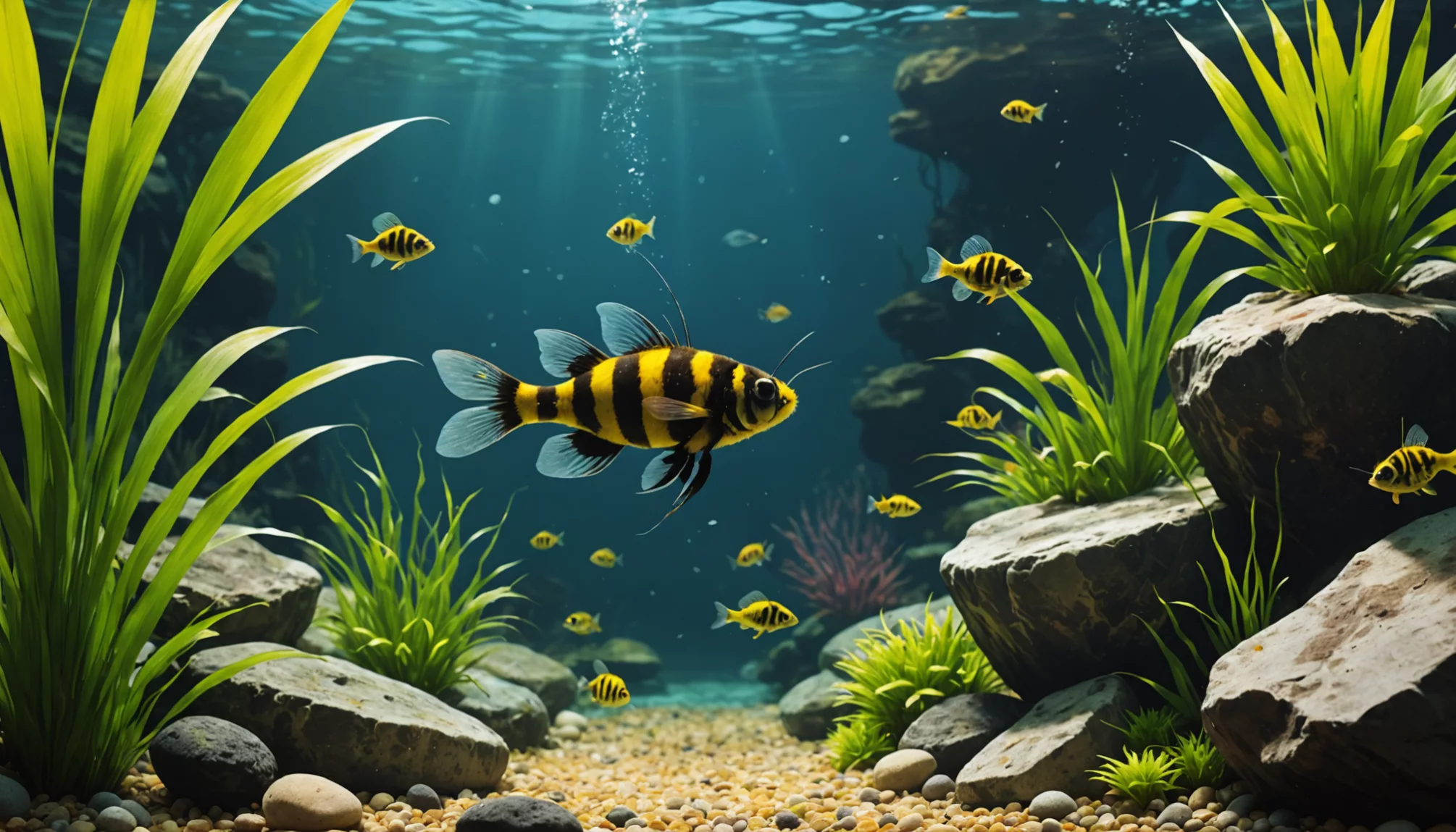
Bumblebee catfish are friendly fish that thrive alongside other peaceful aquatic species. Choosing the right tank mates is essential for creating a harmonious aquarium. This section discusses ideal companions for bumblebee catfish, how to avoid aggressive species, and tips for maintaining a peaceful community tank.
Best Tank Mates for Bumblebee Catfish
Bumblebee catfish flourish in a community tank with other non-aggressive fish. As bottom dwellers, they enjoy swimming in groups. Here are some excellent tank mates:
- Tetras: Species like neon tetras and ember tetras are small and peaceful, adding vibrant color and activity to the tank.
- Guppies: These lively fish are friendly and colorful, making them great companions for bumblebee catfish.
- Small Cichlids: Certain small cichlids, like apistogrammas, can coexist well with bumblebee catfish if they are not overly territorial.
- Corydoras Catfish: These friendly bottom feeders help keep the tank clean by scavenging uneaten food.
Table: Compatible and Incompatible Tank Mates for Bumblebee Catfish
| Compatible Fish | Incompatible Fish |
|---|---|
| Tetras | Larger Cichlids |
| Guppies | Tiger Barbs |
| Corydoras Catfish | Betta Fish |
| Small Rasboras | Rainbow Sharks |
| Endler’s Livebearers | Aggressive Catfish |
Avoiding Aggressive Fish in Your Setup
Avoiding aggressive fish is vital to prevent bullying or harm to bumblebee catfish. Here are some species to keep out of the tank:
- Larger Cichlids: Fish like oscars or jack dempseys can be too aggressive for bumblebee catfish.
- Tiger Barbs: Known for their boisterous nature, these fish may nip at the fins of slower-moving companions.
- Betta Fish: Male bettas are territorial and aggressive, making them unsuitable tank mates.
- Rainbow Sharks: These fish can become territorial as they grow and may attack smaller species.
Choosing peaceful fish helps ensure a stress-free environment for bumblebee catfish, allowing them to thrive.
Creating a Peaceful Community Tank
To establish a peaceful community tank, consider these tips:
- Provide Ample Hiding Spots: Use decorations like caves, driftwood, and plants to give bumblebee catfish secure spaces to hide. This helps reduce stress and enhances their sense of safety.
- Maintain Proper Water Conditions: Regular water changes (20-25% weekly) and monitoring water parameters are crucial for fish health. Bumblebee catfish prefer slightly acidic to neutral pH (6.0 to 7.5) and soft water.
- Avoid Overcrowding: A tank of at least 20 gallons is recommended to prevent stress and aggression among fish. Ensure there is enough swimming space for all species.
- Monitor Behavior: Observe fish behavior after adding new tank mates. Look for signs of stress or aggression, and be ready to separate incompatible fish if necessary.
By selecting suitable tank mates, avoiding aggressive species, and creating a peaceful environment, bumblebee catfish can enjoy a thriving aquarium community.
Citations:
Comparison with Other Popular Freshwater Catfish

Bumblebee catfish stand out among freshwater catfish due to their unique appearance and specific care needs. Comparing them to other popular freshwater catfish helps understand their characteristics better.
Size Comparison
Bumblebee catfish vary in size based on species. The South American bumblebee catfish (Microglanis iheringi) grows to about 6 to 8 inches (15 to 20 cm), while the Asian bumblebee catfish (Pseudomystus siamensis) is smaller, reaching only 3 to 4 inches (7.5 to 10 cm). Here’s a size comparison with other common freshwater catfish:
| Catfish Species | Average Size |
|---|---|
| Bumblebee Catfish | 3 to 8 inches |
| Corydoras (Corydoras spp.) | 2 to 4 inches |
| Channel Catfish | 24 inches or more |
| Bristlenose Catfish | 3 to 5 inches |
| Asian Redtail Catfish | Up to 24 inches |
Behavior and Habitat
- Bumblebee Catfish: These nocturnal fish prefer the tank bottom, seeking hiding spots. They may display aggression toward more boisterous species. A well-planted tank with ample hiding spots is ideal for them.
- Corydoras: Peaceful and social, Corydoras are also bottom dwellers. They thrive in groups and adapt well to community tanks.
- Channel Catfish: Known for their large size, channel catfish need spacious tanks. They are not suitable for community tanks with smaller fish due to their predatory nature.
- Bristlenose Catfish: These peaceful fish fit well in community tanks and help maintain cleanliness by eating algae.
- Asian Redtail Catfish: This species can grow large and may become aggressive, requiring large tanks (ideally 100 gallons or more) and not suitable for smaller community tanks.
Care Requirements
Bumblebee catfish require specific care, including attention to water parameters and tank size, typically needing 20-25 gallons for optimal growth. In contrast:
- Corydoras thrive in smaller tanks, often around 10 gallons.
- Channel Catfish need larger tanks, usually 50 gallons or more.
- Bristlenose Catfish can do well in 10 to 20-gallon tanks.
- Asian Redtail Catfish require expansive setups, ideally 100 gallons or more.
Diet
Bumblebee catfish benefit from a varied diet, including high-quality pellets and live foods. This dietary need is similar to other catfish:
- Corydoras enjoy sinking pellets and flake food.
- Channel Catfish are omnivorous and can eat a variety of commercial fish foods.
- Bristlenose Catfish primarily eat algae wafers and plant matter.
- Asian Redtail Catfish require a protein-rich diet, including meaty foods.
Conclusion
Bumblebee catfish are truly fascinating creatures! These bumble bee-patterned fish can grow quite large, so it’s important to provide them with a spacious tank of at least 20-25 gallons. Their care involves maintaining clean water conditions and a balanced diet to promote healthy growth. Also, choosing the right tank mates can create a peaceful environment for your fish.
Remember, taking care of bumblebee catfish requires dedication and attention. With the right setup and regular maintenance, you’ll enjoy watching these beautiful fish thrive! So, are you ready to dive deeper into the world of fishkeeping? There’s so much more to learn and discover about these amazing aquatic friends!
FAQs
1. How Long Do Bumblebee Catfish Live?
Bumblebee catfish can live for about 5 years with proper care. Key factors include a healthy environment, a balanced diet, and good water quality. Regularly monitoring tank conditions, such as temperature and pH levels, is vital for their longevity. Maintaining these aspects significantly enhances their quality of life and helps them thrive in a home aquarium.
2. What Should I Do If My Bumblebee Catfish Is Not Growing?
If your bumblebee catfish isn’t growing, check the water quality, especially temperature, pH, and ammonia levels. Ensure they’re getting a balanced, protein-rich diet, including sinking pellets and live/frozen foods. Finally, make sure they’re not being stressed by aggressive tank mates. Choose peaceful companions for a healthy environment.
3. What Are Some Tips for Setting Up a Successful Tank for Bumblebee Catfish?
Bumblebee catfish need a 20-gallon tank with warm water (23-27°C) and slightly acidic pH (6.0-7.5). Provide plenty of hiding spots using rocks, plants, and driftwood. Feed them a balanced diet of sinking pellets and live/frozen foods. Regular weekly water changes (20-25%) are essential for a healthy environment. These steps will ensure your bumblebee catfish thrive in their aquarium.

